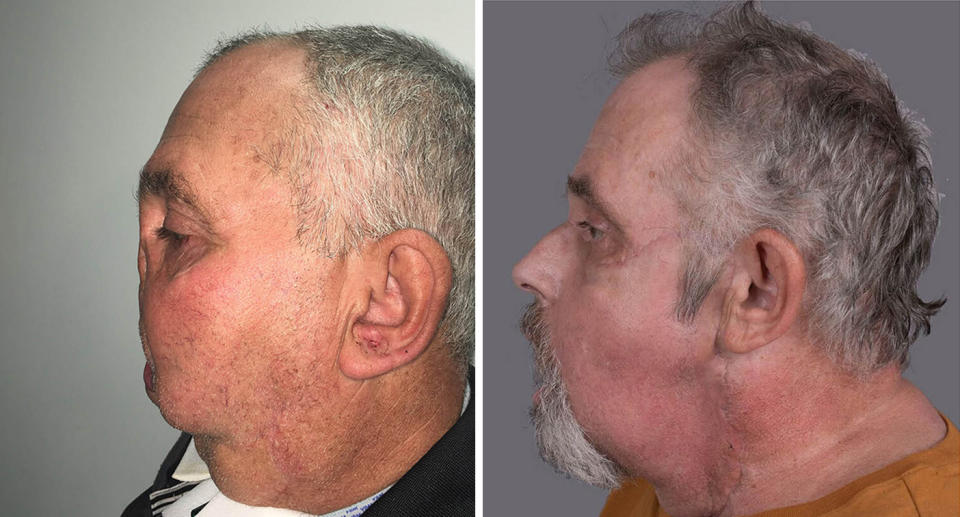Disfigured man's remarkable transformation after face transplant
A 64-year-old grandfather, who had half his face blown off in a hunting accident, is the world’s oldest person to ever have a full face transplant after becoming severely disfigured.
Canadian man Maurice Desjardins, from Gatineau, Quebec, needed his jaws, teeth, lips, nose and face muscles and nerves replaced in the extraordinary 30-hour operation.
He was hit in the face by a bullet from a hunting rifle in 2011, but surgeons have successfully used a donor’s face to rebuild his, giving him a new lease on life.

Mr Desjardins had to breathe through a hole in his neck because his face was so disfigured, and lived in constant pain before his life-changing operation.
It was carried out at Hôpital Maisonneuve-Rosemont in Montreal, Canada in May this year but details have only now been released by the hospital.
A team of 100 medical staff were involved in the operation, allowing Mr Desjardins to now eat, speak, breathe and even smell with his new face.
Doctors said the operation was the last chance of restoring a normal life for Mr Desjardins, who lived in constant pain for the seven years after his accident.
Only 40 face transplants have been done in the world since 2005.
Health officials said they were “very pleased” with the transformation and the lead surgeon, Dr Daniel Borsuk, said it offered “immense hope” to his patient.
A ‘new lease on life’
Going out in public became difficult for him because he was so disfigured, leading him to spend a lot of time at home on his own.
Doctors said Mr Desjardins is a “natural extrovert” and had been living in hope of returning to a normal life.
And now, thanks to the day-and-a-half’s work for nine surgeons, Mr Desjardins has regained the ability to breathe, eat, speak and smell with his new face.
Mr Desjardins had to go through years of testing to check he was suitable for the transplant and mentally strong enough to cope with the change.

The procedure has given him a new lease on life after he spent years breathing through a hole in his neck, and found it difficult to speak, sleep or eat properly because of his devastating injury.
“Facial disfigurement can have a detrimental effect on self-confidence and productivity, and therefore, this transplant offered immense hope and possibility to our patient,” Dr Borsuk said.
Mr Borsuk said Mr Desjardins wanted to be able to go out with his granddaughter without being stared at, and the surgery gave him a “second lease on life”.
He said the patient was so mentally tough that even with everything that was done, he had already begun accepting the new face.
How the facial transplant works
Transplant Quebec provided Mr Desjardins’s new face after securing permission from the donor’s family.
The procedure for a face transplant involves grafting a large, intact section of a donor’s face onto the disfigured face of a patient, which may have been damaged by disease or injury.
Donated tissue – called an allograft – only comes from donors who gave permission while they were alive or if permission was given by their family.
Once the two pieces of flesh have been swapped, blood supply must be reconnected via a microsurgery process called free tissue transfer.
During this process surgeons work under a microscope to join up the severed blood vessels from the two separate pieces of tissue, essentially plugging the transplanted face into the patient’s heart so the muscle and skin stay alive.
– Source: Australscope


